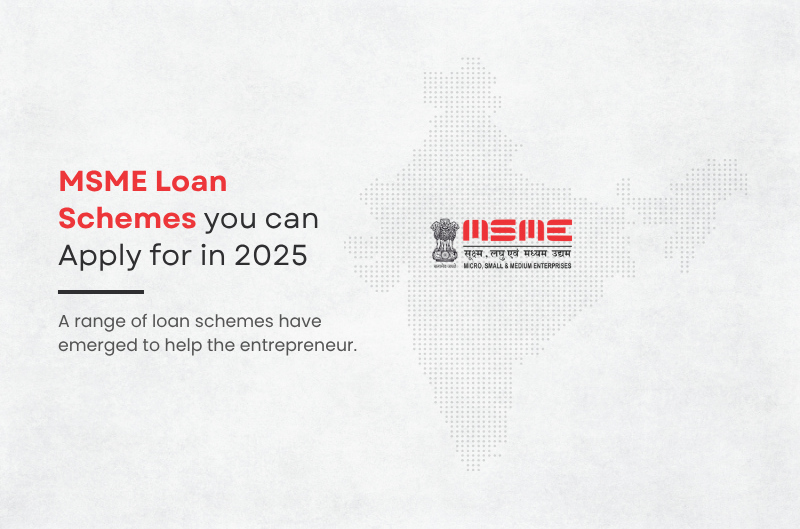Achieving recognition as a startup in India is more than a formality; it’s a strategic move that opens one up to a whole world of opportunity. The government’s “Startup India” initiative, run by the Department for Promotion of Industry and Internal Trade (DPIIT), is a solid platform for new businesses. Getting it right through registration is the first major step. This is a step-by-step guide to becoming officially recognized as a startup, outlining the requirements for eligibility and the invaluable benefits that await you.
How to Register a Startup: Step-by-step registration process (DPIIT, MCA, GST)
Before you can be legally certified as a startup by the DPIIT, you will first establish a legal basis for your firm. It can be broken down into three compulsory steps.
Building the Legal Framework (MCA)
This is step number one and most important. Your company needs to be legally incorporated. The most popular and preferred forms of a startup are a Private Limited Company or a Limited Liability Partnership (LLP). These forms provide you with a clear legal identity and shield you from limited liability, which is paramount in raising investment and managing risk.
The entire procedure is monitored by the Ministry of Corporate Affairs (MCA) and involves the following key steps:
- Get Your ID: Any potential director or partner will have to apply for a Digital Signature Certificate (DSC) and a Director Identification Number (DIN). These are your sole electronic IDs for all official MCA submissions.
- Reservation of Name: Choose a unique company name and check if it is available on the MCA portal. You will fill in the SPICe+ form to reserve the name so that it is not the same or similar to any company or trademark.
- File for Incorporation: Once your name has been cleared, you will submit a detailed application using the SPICe+ form. This would be your company’s charter documents, such as the Memorandum of Association (MOA) and Articles of Association (AOA), that outline your company’s purpose and rules of operation.
- Obtain Your Certificate: If the submission is successful, the Registrar of Companies (ROC) will issue a Certificate of Incorporation (Certificate of Registration in the case of an LLP). It is your birth certificate and is issued along with an automatically generated PAN and TAN.
Tax Preparation (GST)
Although not necessary for all businesses initially, GST (Goods and Services Tax) registration is the accepted standard and part of the proper formalization of your business. GST registration becomes necessary when your turnovers cross a specified limit (currently ₹40 lakh for goods and ₹20 lakh for services, lower limits in some states). Even below this limit, voluntary registration is advisable. It allows you to claim Input Tax Credit (ITC) on your purchases and makes your business seem more professional to clients. This is done online on the GST portal and is usually straightforward once the company has been incorporated.
Government Recognition Acquisition (DPIIT)
This is the final step that transforms you into a “recognized startup,” and you are eligible for all the government incentives.
- Create Your Profile: Visit the official Startup India website and register your business.
- Fill in the Application: Provide your company’s legal details, including the MCA registration number. Your pitch is the most important part of this application.
- Submit Your Pitch: You’ll need to submit a short “write-up” or “proof of concept” as to why your startup is innovative. It’s not a business plan; it’s your chance to persuade the government that your idea is innovative and can generate substantial wealth or employment. A good pitch deck or a concise summary of your product/service is a requirement.
- Get Recognized: Your application will be received and processed by the DPIIT. Provided everything goes smoothly, you will soon receive a distinctive recognition number and DPIIT certificate. The process is highly automated and takes at least 48 hours.
You may also like, New DPIIT Guidelines: What Startups Need to Know
Eligibility criteria for the Startup India Scheme
Before commencing the DPIIT application, ensure that your business meets these tight requirements:
- Form of Business Entity: You have to be registered as a Business Limited Company, an LLP, or a Registered Partnership Firm. You cannot be a sole proprietor.
- Age: Your business entity must not be older than 10 years from the incorporation date.
- Annual Turnover: Your overall turnover must not have exceeded ₹100 crore in any of the previous financial years.
- Original Entity: Your company must be an original, new entity, and not a re-establishment or a consolidation of a current firm.
- Innovation & Scalability: This is where it’s at. Your company must be creating something new, a new product, service, or process with a scalable business design and the capacity to have a profound impact.
Common mistakes to avoid
- Choosing the Wrong Structure: Starting as a sole proprietorship can be a capital dead end. Raising venture capital and angel investors is best done through a Private Limited Company.
- Sending in a blanket pitch: DPIIT application is not a tick box. Your business write-up must distinctly articulate your innovation and scalability. Don’t state that you are a “tech company”; state what problem you are solving and how your solution is truly distinctive.
- Overlooking Compliance: It is not an excuse for legal compliance. You are still obliged to file your annual returns with the MCA and pay your taxes on time to keep your status and avoid penalties.
- Jumping the Gun: Do not apply for DPIIT recognition until you have succeeded in getting your company incorporated and have received your Certificate of Incorporation. This is an error that will lead to flat rejection.
Benefits of registration (tax, funding, recognition)
Having your DPIIT certificate is a tremendous win for your startup. The benefits are numerous and can assist in giving the much-needed runway to early-stage growth.
- Tax Holidays: Eligible start-ups can have a three-year 100% tax holiday on income in their first ten years, providing you with a convenient cash flow injection in your early years.
- Streamlined Compliance: You can certify your compliance with six labor and three environmental laws for five years. This reduces regulatory compliance by leaps and bounds and enables you to focus on your business.
- Intellectual Property Protection: You get an 80% discount on patent filing costs and a quick process for your patent and trademark applications. Your intellectual property protection is much cheaper and quicker.
- Access to Capital: DPIIT-registered startups have access to various government-backed funding schemes, including the “Fund of Funds for Startups” and the “Startup India Seed Fund Scheme.”
- Simplified Public Procurement: When bidding for government contracts, experience and turnover are exempted, so equal footing with larger and more established firms. You also don’t need to deposit Earnest Money Deposits (EMD).
The journey towards establishing a successful startup is challenging, but by following the correct initial steps, you can position your company for a solid start. With this guide, you can feel comfortable with the process of registration and be able to start taking advantage of the strong tools that the Indian government has implemented to enable you to thrive.














